
Ectobiidae is a family of the order Blattodea (cockroaches). This family contains many of the smaller common household pest cockroaches, among others. They are sometimes called wood cockroaches. A few notable species include:

Corydiidae, previously known as Polyphagidae, is a family of the order Blattodea (cockroaches). Many are known as sand cockroaches. The family is divided into five subfamilies, comprising some 40 genera. One prominent species is the desert cockroach, Arenivaga investigata.

Cockroaches are insects of the order Blattodea, which also includes termites. About 30 cockroach species out of 4,600 are associated with human habitats. Some species are well-known as pests.

Arenivaga investigata, also known as the desert cockroach, is a member of the cockroach family Corydiidae.
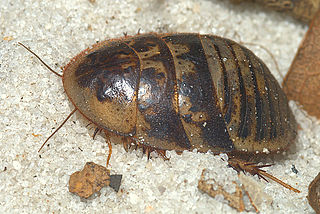
Arenivaga is a genus of sand cockroaches, of the subfamily Corydiinae, in the family Corydiidae. These cockroaches live in sandy soils and dunes in the southwestern United States, Florida and Mexico. Arenivaga comes from the Latin arena meaning sand and vagus meaning wandering.

Arenivaga floridensis is a species of sand cockroaches of the subfamily Corydiinae, in the family Corydiidae. It is a fossorial insect endemic to the Florida sand ridge. Its natural habitats are scrubland and sandhill communities on ancient ridges in peninsular Florida.
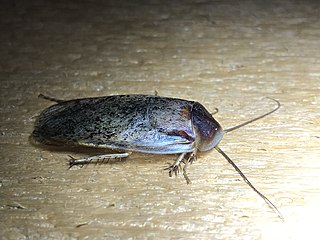
Arenivaga bolliana, known generally as the Boll's sand cockroach or Boll's sandroach, is a species of cockroach in the family Corydiidae. It is found in North America.
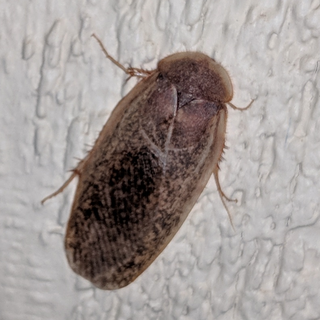
Arenivaga apacha, the Apache sand cockroach, is a species of cockroach in the family Corydiidae. It is found in North America.
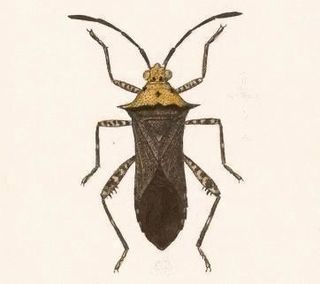
Zicca is a genus of leaf-footed bugs in the family Coreidae. There are about 19 described species in Zicca.
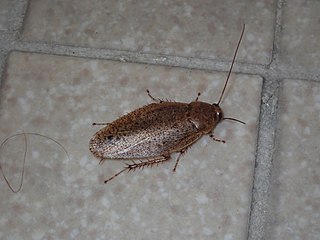
Epilampra maya, the Maya cockroach, is a species of cockroach in the family Blaberidae. It is found in Central America and North America.

Symploce morsei is a species of cockroach in the family Ectobiidae. It is found in North America and the Caribbean.

Neostylopyga rhombifolia, the harlequin roach, is a species of cockroach in the family Blattidae. It is found in North America, Oceania, and Southern Asia.

Eremoblatta subdiaphana, the hairy desert cockroach, is a species of cockroach in the family Corydiidae. It is found in North America.

Ectobius sylvestris, known generally as the forest cockroach or lesser cockroach, is a species of cockroach in the family Ectobiidae. It is found in Europe and Northern Asia, North America, and temperate Asia.
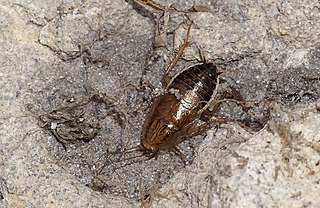
Cariblatta minima, the least yellow cockroach, is a species of cockroach in the family Ectobiidae. It is found in North America and the Caribbean.
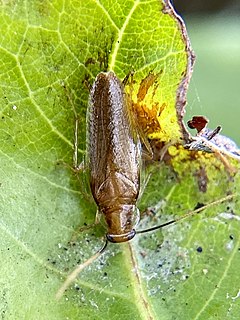
Chorisoneura parishi is a species of cockroach in the family Ectobiidae. It is found in Central America, North America, and South America.

Latiblattella rehni, or Rehn's cockroach, is a species of cockroach in the family Ectobiidae. It is found in North America and the Caribbean.
Arenivaga tonkawa, the tonkawa sand cockroach, is a species of cockroach in the family Corydiidae. It is found in Central America and North America.
Arenivaga genitalis, the Arizona sand cockroach, is a species of cockroach in the family Corydiidae. It is found in North America.
















